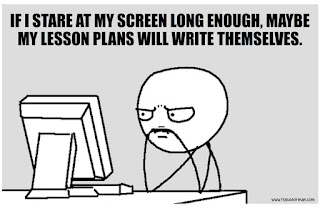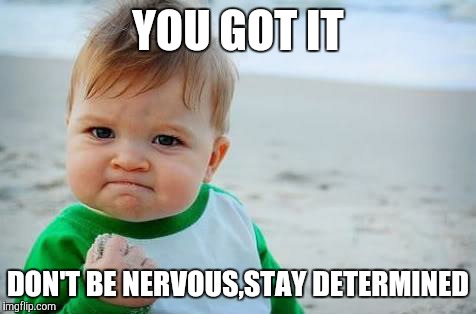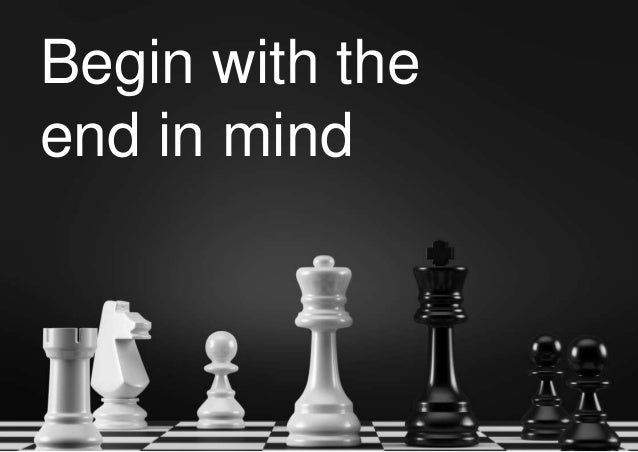Essential Question:
What is the Problem-Solving Approach?
Key Questions:
What is Problem Solving?
How is Problem Solving related to Project Based?
Key Takeaways:
Problem-Based Learning is when students are presented with a problem and they work together to find potential solutions to said problem. They figure out what subject/content knowledge is needed followed by choosing how and with what they will find a solution.- This could be really useful in my future classroom or even in the spring at Cedar Crest. It could be used in an animal science class (among others). Students could be given a problem regarding an animal reproductive system (that's a unit I'll be teaching in the spring) and then given time to set their own guidelines for solving it.
In order to use the problem solving approach, problems should be stated in question form and be relevant to the students' lives.
It is easier to use this method when the teacher knows how much the students know about the subject. Also, it's easier when the students know how the problem solving approach works.
- This can bring scaffolding into a teachers classroom. Start small by explaining the problem solving approach. Then build upon it, giving students more and more autonomy each time.
I will also relate this to last week's topic of Questioning. It is always important to ask the right questions at the right time! Whether it is a non problem solving lesson or not, (the right) questions are key for student understanding and thought.
Reports, presentations and rubrics are all forms of assessment commonly used in problem based learning.
- This is something that I know I would have had trouble figuring out if the reading wouldn't have said it.
Kirkley Reading
The first thing this reading talked about was the importance of the Problem-Solving Approach. Studies have shown that more and more industries need people that can think at higher order levels and that can problem solve at higher order levels.
Finding people that fit these criterion keeps getting harder but by using the Problem-Solving Approach in schools, this will start to be remedied.
- I agree that this is really important! I don't know if I could go to a complete problem solving curriculum/plans. I know it's hard to get away from the traditional approach to teaching but I would definitely like to try my hardest to get away from it!
In Project Based Learning, students learn the main concepts from completing projects. It also requires problem solving skills!! That's where the problem solving approach to teaching comes in! The next 2 readings talked about project based learning.
- I have some ideas (sorry no spoilers here!) for projects in the spring. I was going for the more traditional approach of teaching the subject then having the students do a project. This got me thinking about it and I may try flipping that and having the students learn from their projects!
8 Essentials to Project Based Learning
1. Significant Content
2. A Need to Know
3. A Driving Question
4. Student Voice and Choice
5. 21st Century Skills
6. Inquiry and Innovation
7. Feedback and Revision
8. Publicly Presented Product
All of these are interrelated!! Problem Based Learning, Project Based Learning and even Inquiry Based Learning are have many things in common. More on Inquiry Based Learning/Instruction will be coming in a few weeks! There are more connections to be made!
References:
Buck Institute for Education's "PBL Starter Kit." 2017
Phipps, L.J., Osborn, E.W., Dyer, J.E., & Ball, A.L. (2008) Handbook on agricultural education in public schools, 1st Edition. Boston, MA: Cengage Learning. Note: Chapter 15 – Problem Solving (PDF Canvas) 20 pages
Kirkley, J. (2003). Principles for teaching problem solving. Retrieved from http://citeseerx.ist.psu.edu/viewdoc/download?doi=10.1.1.117.8503&rep=rep1&type=pdf Note: Principles to Teach Problem Solving (Canvas 16 pages)
Larmer, J. & Mergendoller, J.R. (2010). The main course, not dessert: How are students reaching 21st century goals? With 21st century project based learning. Retrieved from http://bie.org/object/document/main_course_not_dessert
Larmer, J. & Mergendoller, J.R. (2010). 8 essentials for project-based learning. Retrieved from http://www.sbcss.k12.ca.us/attachments/article/1058/8_Essentials_article_small_file_size_Oct2012v ersion.pdf




















